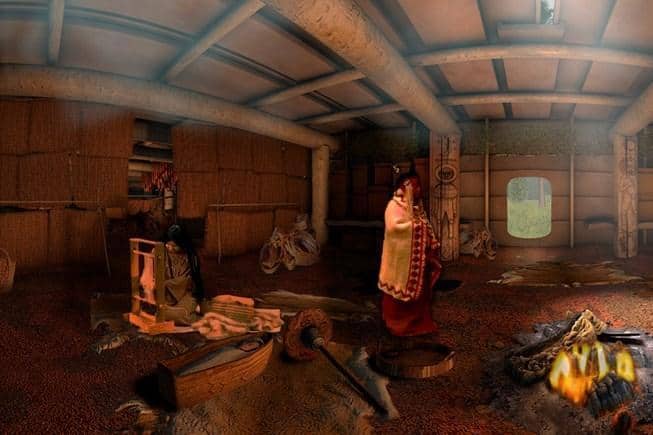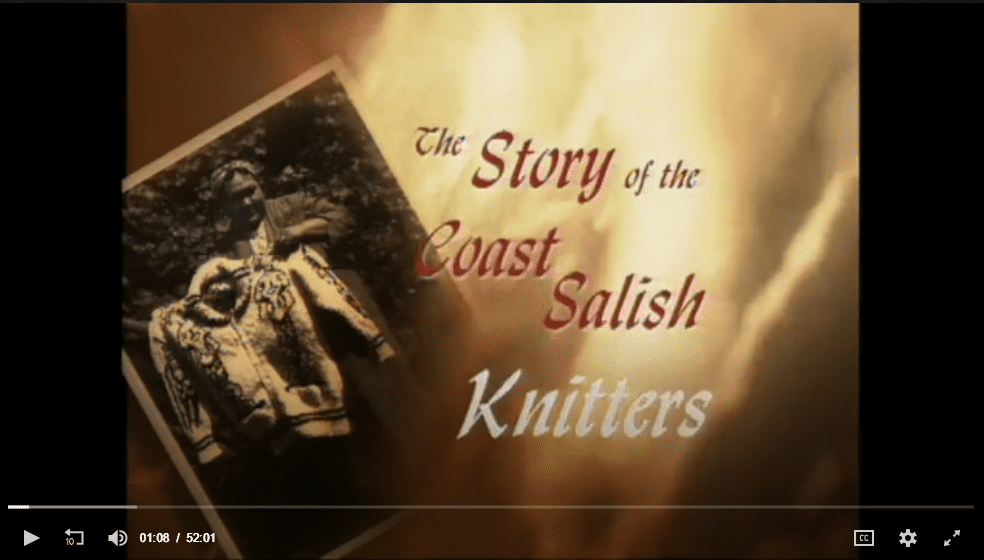Weaving
Introduction Lessons for Cedar Weaving
Toni Frank – First Nation Cultural Art Showcase
Toni describes her love and passion for art and cedar weaving. Toni is a member of the K’omoks and Sechelt First Nation.
Quarterbag Weaving: Coast Salish Weaving
We have videos prepared with Suzanne Camp, retired Indigenous District Cultural Support Worker, to explain and demonstrate how to weave quarterbags. Thanks to the Anjeanette Dawson and Norman Guerrero from who we learned the quarterbag weaving at FNESC (First Nations Education Steering Committee) Conference.
For SD71 employees we have 4 instructional videos in which Suzanne Camp explains the weaving process step by step and a written explanation, from Anjeanette and Norman, of how to weave the bags and some Skwxwú7mesh Snichim (Squamish) language . Please contact anyone from the Indigneous Education Department and they can help you find these videos and files.
The Story of the Coast Salish Knitters
For almost a century, the Coast Salish knitters of southern Vancouver Island have produced Cowichan sweaters from handspun wool. These distinctive sweaters are known and loved around the world, but the Indigenous women who make them remain largely invisible. Combining rare archival footage with the voices of three generations of woolworkers, The Story of the Coast Salish Knitters tells the tale of unsung heroines–resourceful women who knit to put food on the table and keep their families alive. Written and directed by Métis filmmaker Christine Welsh, this is a story of courage and cultural transformation–a celebration of the threads that connect the past to the future.
Archaeological find shows 3,000-year relationship between dogs and B.C. First Nation
CTV News: VICTORIA — Humans have a long relationship with dogs, but now after a recent archaeological dig in the Broken Group Islands on the west coast of Vancouver Island, we’re beginning to understand how far back that relationship actually goes. The number is quite staggering.
Remains of an ancient woolly dog breed were unearthed in 2018 during an archaeological dig at an ancient Tseshaht First Nation settlement on Keith Island.

“A Journey Into Time Immemorial is an original creation of the SFU Museum of Anthropology and Ethnology with active participation from local Sto:lo Elders and knowledge keepers. It was originally a Virtual Museum of the Sto:lo people. Given it was created in 2008, the program platform became outdated. This valuable resource is now offline. SFU did give permission to download the information, thus to save as much of it as we could. This page is an archive of information from this website to be used for educational purposes.”
Cedar Weaving
Harvesting Cedar
Special Note: There are protocols that go with collecting cedar bark. Some things to consider about cedar collection is that the people who collect cedar are from the local nation, have been taught from an elder, know how and when to do this without harming the tree in that specific area. Cedar is considered sacred for many.
Cedar bark harvesting from Lonnie Wishart on Vimeo.
Cedar Weaving – Squamish Lil’wat Cultural Centre
Watch as QúQú Héy Yóóch — “Bernadine Billy”, Txwolt’malh — “Holly Joseph” and n̓án̓attw Nkakúsene — “Tanina Williams” work with inner cedar bark, a simple yet effect craft that all guests have the opportunity to practice and take home with them.
Story of Cedar, Cedar Hat Weaving & Bark Pulling Cowichan Coast Salish
From the moment of birth to the time of passing, cedar has traditionally played a vital role in the life of the First People of the Pacific Northwest.
This 30min documentary tells the story of cedar, how the bark is stripped from the cedar tree and prepared for cedar weaving (hats) and discusses the art of cedar weaving and the effect this workshop had on the participants. The project was facilitated by Maria Sampson. The video was produced by Louise McMurray and the Cowichan Aboriginal Film Festival and directed, shot and edited by Phil Ives.


